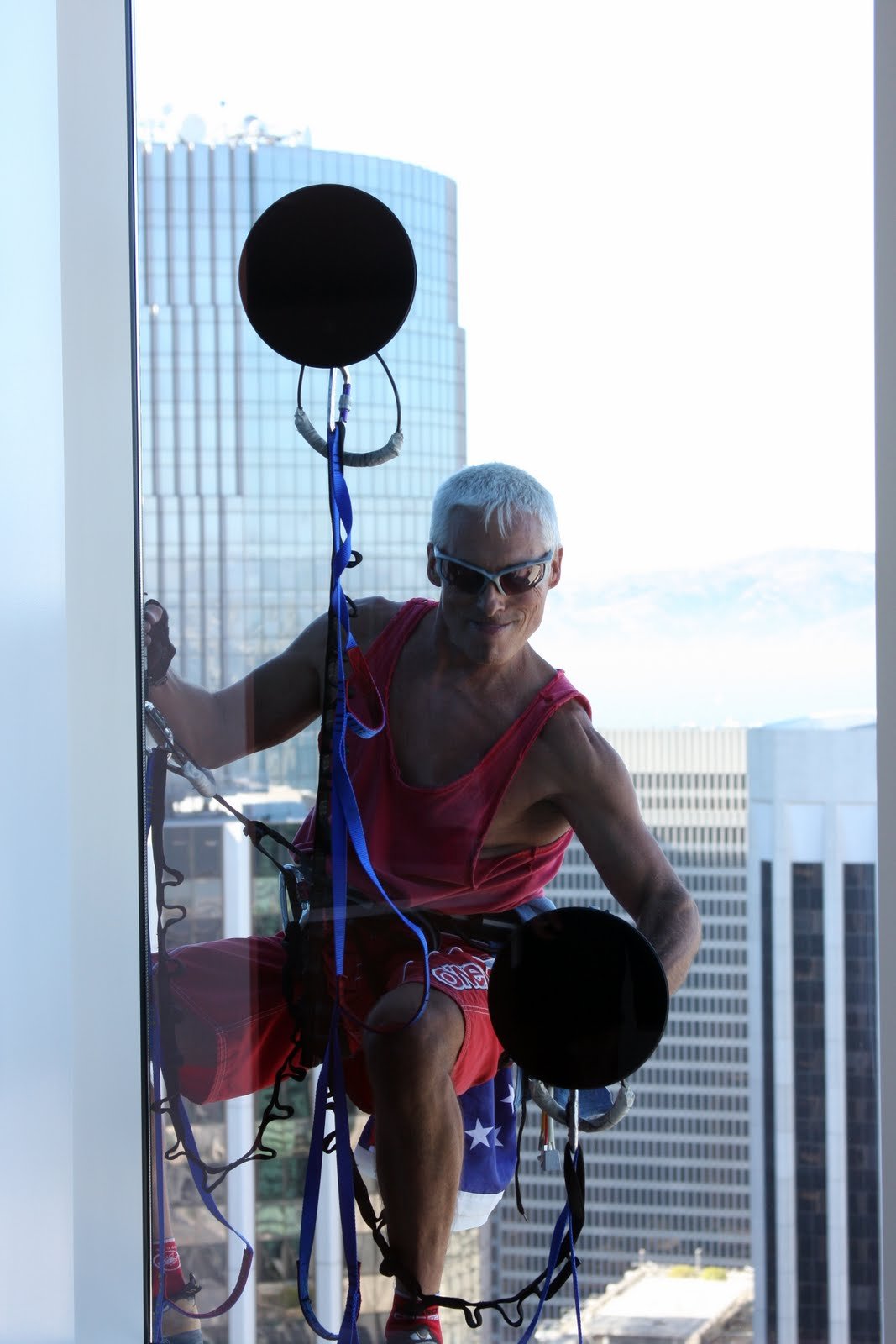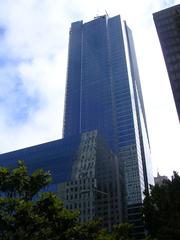
Millennium Tower San Francisco: Visiting Hours, Tickets, and Attractions Guide
Date: 14/06/2025
Introduction
Millennium Tower, located at 301 Mission Street in San Francisco, is one of the city’s most recognized luxury residential skyscrapers. Since its completion in 2009, the 58-story glass tower has become a symbol of modern urban living, architectural ambition, and, notably, complex engineering challenges. While the building is private and inaccessible to the general public, its intriguing story, striking presence in the skyline, and proximity to key downtown attractions make it a point of interest for architecture enthusiasts and visitors exploring San Francisco’s vibrant SoMa and Financial District neighborhoods (Art in Context).
This guide delivers a comprehensive overview of Millennium Tower’s history, cultural significance, engineering journey, current status, and practical details for visitors. It also highlights the best vantage points, nearby attractions, and travel tips for experiencing San Francisco’s evolving urban landscape.
Table of Contents
- Introduction
- Historical Background
- Architectural Significance
- Current Status and Safety
- Visitor Information
- Nearby Attractions
- FAQs
- Summary Table: Visitor Essentials
- Conclusion & Key Recommendations
- References
Historical Background
Development and Design
Millennium Tower was envisioned in the early 2000s as part of San Francisco’s downtown revitalization efforts. Developed by Millennium Partners and designed by Handel Architects, its construction began in 2005, with completion in 2009. At 645 feet (197 meters), it became the city’s tallest residential building and the fourth tallest overall (Art in Context; Wikipedia).
The tower was intended as a beacon of urban luxury, featuring over 400 high-end condos and penthouses, resort-style amenities, and a sleek, modernist façade of reflective glass. The interiors were equipped with premium finishes, floor-to-ceiling windows, and panoramic city and bay views.
Engineering and Structural Issues
Unlike neighboring skyscrapers that anchor foundations to bedrock, Millennium Tower’s original design employed friction piles embedded in dense sand and clay. While compliant with the building codes of the time, this decision ultimately led to significant structural problems. By 2016, the tower had sunk over 16 inches and tilted several inches northwest, increasing to nearly 29 inches by 2024 (NBC Bay Area; Housing Notes).
These issues garnered national attention, spurred lawsuits, and prompted an unprecedented $100–$120 million remediation project. Completed in 2023, the solution involved driving 18 new piles down to bedrock, stabilizing the structure and reversing about an inch of the tilt (SF Standard).
Architectural Significance
Millennium Tower’s design is a hallmark of contemporary urban architecture in San Francisco. The glass façade, vertical emphasis, and clean lines reflect modernist aesthetics, while the building’s amenities—such as an indoor saline lap pool, private screening room, wine cellar, and Club Level lounge—set new standards for luxury living in the city (Art in Context).
The tower’s engineering story has had lasting impacts on local building codes, prompting stricter reviews for foundation designs in earthquake-prone areas (SF.gov Safety Review Report). Millennium Tower’s saga is now a case study in the risks and rewards of high-rise construction on challenging soils.
Current Status and Safety
Following the extensive retrofit, Millennium Tower is considered structurally stable and safe for residents. The city requires ongoing monitoring for at least a decade to ensure long-term integrity. While the tilt remains just under 29 inches at the northwest corner, no significant new movement is reported (Housing Notes; NBC Bay Area).
Security and access are tightly controlled, with 24/7 staff, concierge services, and restricted entry to all interior spaces and amenities.
Visitor Information
Access and Viewing
Millennium Tower is a private residential building.
- No public tours, open houses, or ticketed entry are available.
- Interior access is strictly limited to residents, their guests, and prospective buyers (with appointment and financial prequalification).
- Public access: The only exception is the International Smoke restaurant on the ground floor, open to all.
Best Photo Spots
Visitors can enjoy the tower’s architecture and take photographs from several public vantage points:
- Mission Street & Fremont Street Intersection: Dramatic northwest views.
- Salesforce Park: Elevated rooftop park with panoramic cityscape views.
- The Embarcadero Waterfront: Broader shots of the skyline, including Millennium Tower.
- Surrounding Sidewalks: Views from Beale, Mission, and nearby cross streets.
Accessibility and Transit
- Public Transit: Close to BART and Muni Metro stations (Montgomery, Embarcadero).
- Parking: Nearby public garages (e.g., 555 Mission Street Garage, Transbay Transit Center Garage). Street parking is limited and expensive.
- Sidewalks: All surrounding areas are accessible to visitors with disabilities, featuring curb cuts and signals.
- Restrooms: No public restrooms inside Millennium Tower; nearby options include Salesforce Transit Center and local cafes.
Etiquette and Photography Guidelines
- Respect privacy: Do not photograph residents or peer into windows.
- No trespassing: Unauthorized entry is prohibited and monitored by building security.
- Drones: Restricted in downtown San Francisco; check local regulations before use.
- Safety: Observe posted construction signs and avoid restricted areas around the building.
Nearby Attractions
While you cannot tour Millennium Tower’s interior, the neighborhood offers several attractions:
- Salesforce Park: Rooftop gardens, walking paths, and city views.
- Ferry Building Marketplace: Historic food hall and artisanal market.
- Yerba Buena Gardens: Public green space with art installations and playgrounds.
- San Francisco Museum of Modern Art (SFMOMA): World-class collection a short walk away.
- The Embarcadero: Vibrant waterfront promenade.
Recommended dining nearby:
- Blue Bottle Coffee (Transbay Transit Center)
- The Slanted Door (Ferry Building)
- Mourad (Modern Moroccan, 140 New Montgomery St.)
FAQs
Q: Can I tour Millennium Tower?
A: No. Only residents, their guests, and qualified buyers (by appointment) may access the interior.
Q: Is Millennium Tower safe?
A: Yes. After extensive engineering remediation, the building is structurally stable and under ongoing monitoring (SF Standard).
Q: Are there public amenities or events?
A: The International Smoke restaurant is open to the public. All other amenities are private.
Q: Are there tickets or visiting hours?
A: No tickets or official visiting hours exist for the general public. The building and amenities are private.
Q: Where can I photograph Millennium Tower?
A: From public sidewalks, Salesforce Park, the Embarcadero, and surrounding streets.
Q: Is the area accessible?
A: Yes. Sidewalks and crosswalks are accessible; no public restrooms or interior access.
Summary Table: Visitor Essentials
| Aspect | Details |
|---|---|
| Location | 301 Mission Street, San Francisco, CA |
| Public Access | Exterior viewing only; interior limited to residents and qualified buyers |
| Best Photo Spots | Mission & Fremont intersection, Salesforce Park, Embarcadero waterfront |
| Safety | Structurally stable post-retrofit; observe construction signage |
| Amenities | Residents only (pool, gym, lounge, wine cellar, screening room); public restaurant |
| Nearby Attractions | Salesforce Park, Ferry Building, Yerba Buena Gardens, SFMOMA |
| Dining | International Smoke, Blue Bottle Coffee, The Slanted Door, Mourad |
| Transit | BART/Muni (Montgomery, Embarcadero stations); public parking garages nearby |
| Accessibility | Sidewalks and crosswalks accessible; no public restrooms inside building |
Conclusion & Key Recommendations
Millennium Tower is a prominent fixture in San Francisco’s skyline, representing the intersection of luxury living, architectural innovation, and the real-world challenges of building in a seismic city. Its story is a compelling lesson in urban development and engineering resilience. While interior access is not available, visitors can appreciate the tower’s design from public spaces, enjoy nearby attractions like Salesforce Park and the Ferry Building, and dine at the ground-floor International Smoke restaurant.
Travel Tips:
- Use BART/Muni for easy access.
- Explore surrounding public parks for the best views.
- Respect building privacy and follow posted safety guidelines.
- For architecture fans, combine your visit with nearby landmarks for a full urban experience.
Stay updated on San Francisco’s landmarks and visitor tips by downloading the Audiala app and following us on social media for exclusive guides and real-time updates.
References
- Millennium Tower San Francisco: History, Architecture, and Visiting Information, 2021, Art in Context (Art in Context)
- Millennium Tower Safety Review Report, 2021, SF.gov (SF.gov Safety Review Report)
- What Really Happened at the Millennium Tower, 2021, Practical Engineering (Practical Engineering)
- 10 Facts to Know About the Sinking Millennium Tower, 2017, Arch2O (Arch2O)
- San Francisco’s Infamous Leaning Tower Has Been Fixed, 2023, SF Standard (SF Standard)
- Leaning by Two Feet: The $100 Million Fix for San Francisco’s Leaning Tower May Have Worked, 2024, Housing Notes (Housing Notes)
- Millennium Tower Sinking Investigation, 2024, NBC Bay Area (NBC Bay Area)







































































































































































